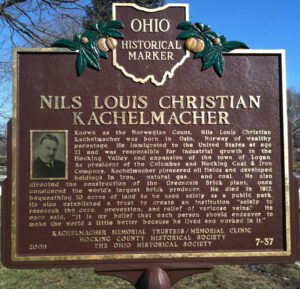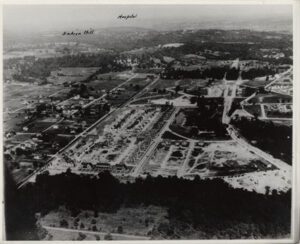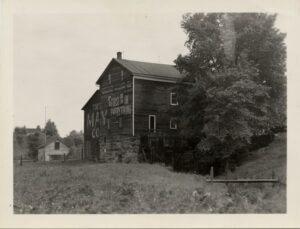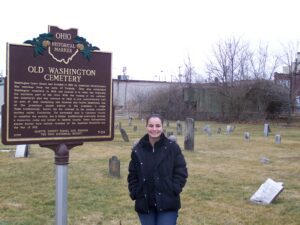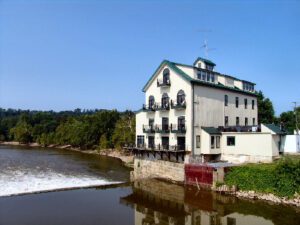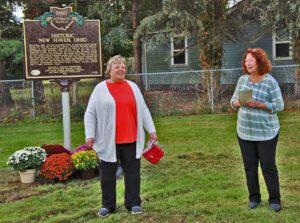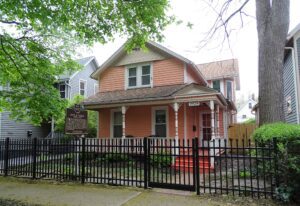, OH
Known as the Norwegian Count, Nils Louis Christian Kachelmacher was born in Oslo, Norway of wealthy parentage. He immigrated to the United States at age 21 and was responsible for industrial growth in the Hocking Valley and expansion of the town of Logan. As president of the Columbus and Hocking Coal & Iron Company, Kachelmacher pioneered oil fields and developed holdings in iron, natural gas, and coal. He also directed the construction of the Greendale Brick plant, once considered the world’s largest brick producer. He died in 1917, bequeathing 10 acres of land to be used solely as a public park. He also established a trust to create an institution “solely to research the cure, prevention, and relief of varicose veins.” He once said, “It is my belief that each person should endeavor to make the world a little better because he lived and worked in it.”
, OH
Ground was broken for Mariemont by Mary M. Emery, the village’s founder, on April 23, 1923. This planned community was designed by eminent town planner John Nolen and twenty-five of America’s leading architects. As part of the “garden city movement,” Mariemont was influenced by English models. Mariemont was incorporated July 12, 1941, and was listed on the National Register of Historic Places on July 24, 1979.
, OH
Fowlers Mill (originally Fowler’s Mills) developed around a group of mills built in the 1830s on the Chagrin River. Opportunities from these mills led to Fowlers Mill becoming the commercial center of Munson Township. From the 1830s into the twentieth century, the community expanded with construction of churches, a post office, township hall, stores, hotel, blacksmith shop, schools, and houses built in such styles as Federal, Greek Revival, Italianate, and Queen Anne. This type of community center was common in rural, nineteenth century America, but rarely survives with so much original fabric intact. On Mayfield Road, the Disciple Church was built in 1842. East of the church, the brick central school built in 1913 replaced earlier one-room schoolhouses. The gristmill is the only mill standing in Geauga County. The cemetery contains burials dating from the 1830s. The Fowler’s Mills Historic District was placed on the National Register of Historic Places in 2002.
, OH
Washington Court House was founded in 1810 by American Revolutionary War veterans from the state of Virginia. They also established Washington Cemetery in 1810 and located it in what was originally the southern part of the town. With the coming of the railroad, the cemetery’s size was reduced to what is now approximately half an acre of land containing one hundred and twelve headstones. One of the prominent people buried in the cemetery is Judge Wade Loofborough, known for his interest in the utopian socialist society called Fourierism. He purchased land in Clermont County to establish the society, but it failed. Loofborough eventually became a respected judge and lawyer in Fayette County. Other distinguished people buried here include veterans of the American Revolution and the War of 1812.
, OH
The Stockport Mill, the third on this site since 1842, was built in 1906 by the Dover brothers. Using a pair of 40-inch Leffel turbines, it harnessed water power for both milling and generating electricity for the town. Known for its Gold Bond, Seal of Ohio, and Pride of the Valley refined flours, the Stockport Milling Company shipped its products by steam packet boat and over the Ohio & Little Kanawha Railroad before the era of all-weather roads. The mill also functioned as a community hub where local farmers obtained supplies and shared news. It ceased operation as a feed mill in 1997.
, OH
New Haven, Ohio, was the mercantile center of southwest Huron County during the first half of the 19th century. Residents described immense wagons, or “land schooners,” lined up for miles on the New Haven-Worthington Road traveling from Columbus to the Lake Erie ports. Organized in 1815, New Haven was one of the early townships formed in Huron County and the Firelands. The village was platted, with streets at right angles around a diamond-shaped town green, after the plan of New Haven, Connecticut. When, in the 1840s, New Haven rejected the railroad’s direct route through the village, the Sandusky & Newark was routed to the west and through Plymouth taking with it the shipping business. Subsequently, New Haven began a steady economic decline into a small crossroads village.
, OH
In 1847, after completion of the Miami & Erie Canal, 66 residents were recorded in Liberty Township. Construction of Wabash Railway in 1854 encouraged trade at the half way point between Washington Station and Napoleon. Proprietors such as George W. Buchanan, Frank Prey, Alexander Cooper, and Benjamin Penncock began business around 1860. On June 4, 1863, Alphaeus Buchanan registered a plot of 12 lots, which became Liberty Center. On April 9, 1874, the Village of Liberty Center was incorporated and became a prosperous town along the Wabash Railway. (Continued on other side)
, OH
Here was born (October 23, 1869) the man for whom the Heisman Football Trophy is named. The College Football Hall of Fame enshrines him as a superior coach. An important pioneer and game innovator, Heisman is considered the “Father” of the forward pass, the center snap, interference on end runs, the hidden ball play, the double pass, dividing the game into quarters, the statistical score board, and the quarterback’s “hike” or “hep” to initiate plays.


